New paper shows how meta-learning may advance childhood cancer research.
Once again, we’re talking cures. May is Brain Tumor Awareness Month, and we are laser-focused on driving the kind of research needed to discover cures for childhood cancers of the brain — because not one single drug has ever been developed for pediatric brain cancer and this is unacceptable.
We shared in our last blog that there are three components to make critical data available:
- Data collection
- Data storage
- Data access
In our April blog post we discussed how the Pediatric Cancer Data Commons is creating the dictionary for childhood brain tumors to aid data collection. This month we want to highlight the work of the Children’s Brain Tumor Network (CBTN) to expand the use of artificial intelligence (AI) and machine learning to fight childhood cancer, greatly accelerating researcher capability to process swaths of data.
CBTN is making headway toward our goal of building a robust database to include everything we know about childhood cancer that can be searched and researched using AI. Bridge To A Cure Foundation sits on the CBTN Executive Council to ensure that the important work of this leading database consortia continues unabated.
As we noted in our January blog, they’re developing a model for attacking brain tumors that can be applied to help all children facing cancer. Because there aren’t enough samples or information at any one hospital for researchers to make meaningful impact on their own, the group pulls together this data globally and makes it available to any researcher who requests it. Currently they supply data in support of 170 projects with leading childhood brain tumor research and treatment centers worldwide.
We’re excited to share this new article in the British Journal of Cancer titled “Meta-learning reduces the amount of data needed to build AI models in Oncology,” which is the first to look at the use of AI using CBTN data.
Meta-learning and its importance to advancing discovery
Meta-learning is described as the use of machine learning algorithms to assist in the training and optimization of other machine learning models. In the AI sense, meta-learning is the ability of an artificially intelligent machine to learn how to carry out various complex tasks, taking the principles it used to learn one task and applying it to other tasks.1
Transfer learning is a machine learning method in which a model developed for one task is reused as the starting point for a model on a second task. It has been particularly effective in building models for biomedical data.
“Recent genomic studies in oncology demonstrate that meta-learning can facilitate transfer learning and reduce the amount of data that is needed in a target domain by transferring knowledge from abundant genomic data in different source domains enabling the use of AI in data scarce scenarios,” says the article, by Olivier Gevaert.
Related to transfer learning, meta-learning can be thought of as “learning how to learn.” Meta-learning “holds great promise to reduce the amount of biomedical data needed to train predictive models in the target domain of interest,” the new report states. It has been used, for instance, to translate huge amounts of data in a way that can benefit individual patients.
“We show that meta-learning outperforms regular transfer learning and direct learning when predicting survival outcome in a target cancer using data from 33 other cancer sites as source data, reducing the amount of data that is needed in the target domain,” the paper states.
These advances show highly promising applications particularly in the context of rare diseases, such as certain childhood cancer.
One reason new discoveries in childhood cancer have lagged those in adult oncology is the fact that cancers are far more common in adults than in children. As a result, efforts such as CBTN’s face significant challenges in collecting large sets of samples needed for analysis. That is why CBTN’s global and collaborative approach is considered the model for collecting the types and quantity of childhood brain tumor data that can be used by human and artificial intelligence alike to lead to new discoveries toward cures.
“Meta-learning provides opportunities to take advantage of abundant adult data and transfer knowledge to solve questions in pediatric oncology,” the paper states.
This is critical when one considers that brain and central nervous system tumors are the most common cause of death by disease in children from birth to 19 years old in the U.S. and across the globe, affecting 412,000 children and young adults each year.
Much work remains to be done to test meta-learning strategies. Yet our partnership with CBTN is making great strides toward our goal of sparking greater collaboration to accelerate the search for cures.
1Nelson, Daniel, “What is Meta-Learning?” unite.ai, August 23, 2020






